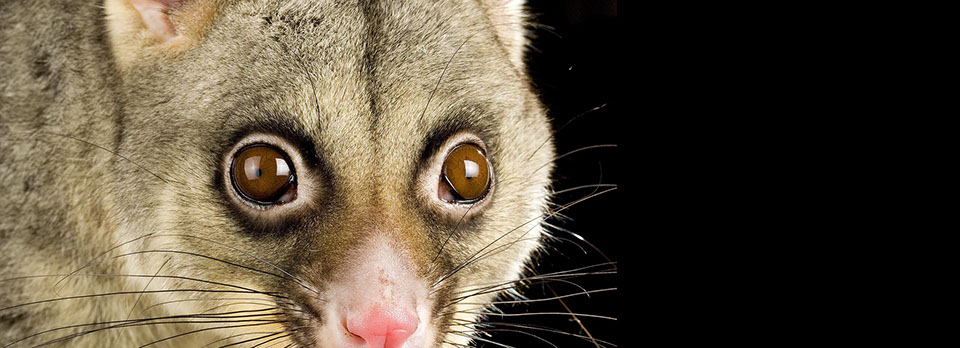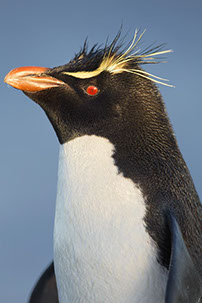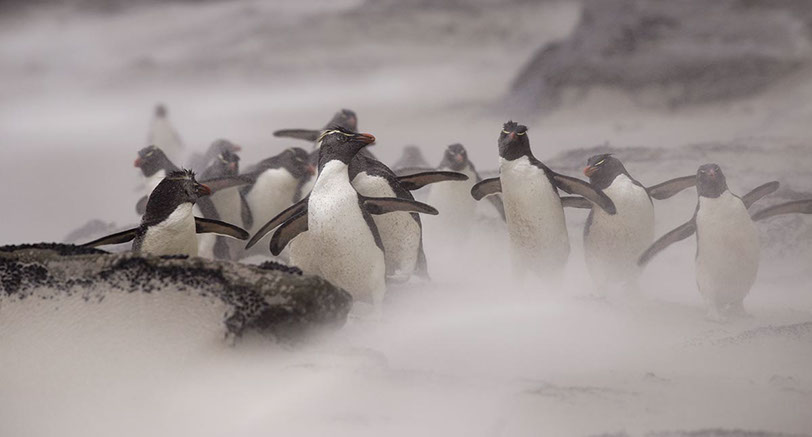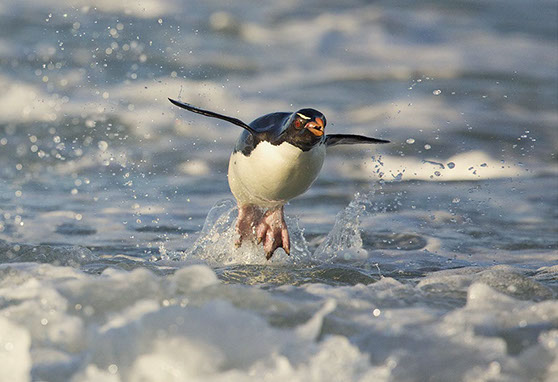
Nic Bishop
Author and Photographer
of Nature Books for Children
Book Notes - Taking the Photographs for Penguin Day
Penguins are a perennial favorite with photographers. Their personalities are engaging, and their antics are often visual comedy. But what struck me most while photographing penguins was their stoic attitude to life in some of our planet’s most hostile environments.
One of the hardiest penguins must be the rockhopper. They are one of the smaller penguins, yet they survive in the wildest of places. I photographed rockhoppers mostly on the Falkland Islands (Malvinas) in the South Atlantic. As their name suggests, they favor rocky coastlines, and often have to scramble up treacherous sea cliffs to reach their breeding colonies.


These two tiny rockhoppers are heading for a crack in the cliffs, just where the wave is falling backwards
At one place I watched with amazement at how they climbed cliffs about 100 feet high, bravely tackling difficulties that would daunt even the most experienced rock climber. And they did it with just their toes and beak (no hands)! The tiny penguins would leap from an incoming wave and scramble upwards as fast as possible, before the next crashing wave plucked them from the cliffs and back into the water. Often it would take repeated attempts to escape the surging seas, but they would always persist until they finally reached their chicks waiting for them at the top. Yet even there, the penguins were not always safe. Every few years a monstrous rogue wave will sweep in from the ocean, so tall that it crests the cliff top and washes the colony into the water.

Rockies stumbling, with eyes closed, into a windstorm of sand.
Coming ashore at beaches wasn’t necessarily easy either. The southern latitudes are known for furious winds that can make it hard to stand on your feet. On some days the gales would raise blinding sandstorms that made it impossible for the penguins to see where they were going. But the rockies would conquer everything with feisty determination. On reaching the colony they would greet their partners with a spirited round of trumpeting calls, as if it was just all in a day’s work. Then they would feed their chicks, dust themselves off, and get ready to head back to the ocean to gather more food.
It was always exciting to photograph such plucky individuals. Penguins can quite trusting with humans, which can make them relatively easy to photograph. But it is important not to disturb them. For most of my photographs I used a telephoto lens that allowed to keep a respectful distance. My time was largely spent sitting quietly and watching while the penguins went about their activities. On occasions, though, I became a center of attention. Penguins are naturally curious, and sometimes a few would notice me and waddle over to check me out. Then I could swap my telephoto for a shorter focal length lens.
The most memorable moment was photographing the penguins returning from the sea. They would come in at sunset, leaping from the water and diving, then leaping again and diving. It is a type of swimming called porpoising, and it helps the penguins move at high speed and avoid predators that might be lurking in the shallow water.

I really wanted to photograph a porpoising rockhopper in mid-leap, but there was no easy way to do this, other than blind luck. What I did was follow an incoming penguin through my camera and try to anticipate the next spot it was likely to leap from the water. Then I would focus at that spot and hold down the shutter button, rapidly taking one photo after another and hoping the penguin would happen to leap into the frame just as the shutter opened (for photo enthusiasts, I had to shoot jpeg instead of raw so as not to clog up the camera’s buffer with the avalanche of incoming data). But most times the penguin would pop out of the ocean somewhere else, and after 10 or 20 empty shots, I’d try all over again, and again. And so it went, until finally, after hundreds and hundreds of shots, I’d get lucky. A penguin would leap from the water exactly where my camera was pointed!
Text and Images - Copyright Nic Bishop